Don't wanna be here? Send us removal request.
Text
Pre-Expo Blog Post!

Unlike the dietary lifestyles of vegetarianism or veganism, living with an allergy isn’t a choice. Imagine for a minute, your favorite food. Recall its taste, its texture, the pure rush of endorphins, the goofy smile that plays on your lips after the first bite.
Food allergies can rob you of those simple pleasures. Not every food allergy prevents you from having your favorite dish, but it’s a very real scenario for some. It isn’t a fair deal, and it can happen without warning. You don’t necessarily have to be born with it, either. Like asthma, it could pop up at any time and requires changes to your daily life.
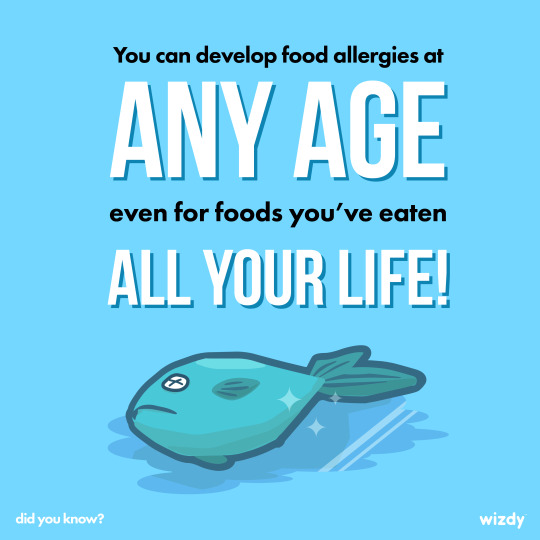
But it could get harder still. You’re now on the lookout for these allergens everywhere you go. Restaurants, mum’s kitchen, your best friend’s backyard cookout; any food prepared in these areas may have come into contact with an allergen. There’s a whole slew of ingredients that could severely impact your health, and you need to be vigilant about being caught off guard. It’s an extra step of caution you may not have been used to previously.

Photo by: Andy Chilton
Food allergies don’t just affect one individual, they affect the people around them as well. We should all be mindful about cross-contamination, because it could help save a life! We might have to cook different food, keeping loved ones and friends with allergies in mind. Allergies require constant awareness from EVERYONE, and affect US ALL in some way. That’s why it’s important to educate as many people as possible on their severity.
Which brings me to the penultimate point of this post: Nikita and I have been invited to attend the Gluten Free & Allergen Free Exposition!

This Expo is more than just a place for those with food allergies to meet and make connections, it’s an important tool we can use to spread awareness about allergies and help our communities grow in their understanding of how it affects us all. This Expo is especially important to me because I strongly believe in making our world a more accepting, safer, healthier place. Personally, joining Wizdy was the biggest, most important step down that path, and connecting with everyone at this event will allow me to further that goal. We’re all in this fight together, and we need to support each other. I urge everyone – whether or not these topics interest you – to attend if possible!
To buy a ticket, please visit the #GFAFExpo ticketing site at: ow.ly/5kBT300i0wl
When purchasing your ticket, enter the code ‘ADVANCE’ to get a 20% discount!

I also happen to have THREE free tickets to give away! They are good for ONE day of the event (Saturday or Sunday). If you’d like one, post a comment on our Wizdy Games Facebook wall with your name, desired day of attendance and reason for wanting to attend this amazing Expo!
I look forward to all of your responses, and sincerely hope I’ve opened a few eyes to how important it is that we’re all educated on food allergies and their effects.
Don’t forget to keep up with #GFAFExpo info at:
facebook.com/gfafexpo
twitter.com/gfafexpo
instagram.com/gfafexpo/
Until next time,

Shiva
0 notes
Text
You asked, we heard and pediatric pulmonologist Drewek is here to answer your asthma-related questions

In January we interviewed pediatric pulmonologist Rupali Drewek; click here to read our first interview with Dr. Drewek. After our interview, you commented, tweeted and shared your questions about your child’s asthma. Since then, we've collected all of your questions and today Dr. Drewek is here to answer them! We thank you for sharing your thoughts and questions with us and hope this is helpful to you all.
Mom of a 3 year-old: My son had an allergy test done and the doctors said he has no allergies. How do you know what triggers his asthma?
Dr. Rupali Drewek: Allergens are only some of the triggers for asthma. Other triggers can include viral infections (aka the common cold), exercise, weather change, cold weather, strong scents, smoke and wind. A diary where you keep track of symptoms may help determine what your child’s triggers are.
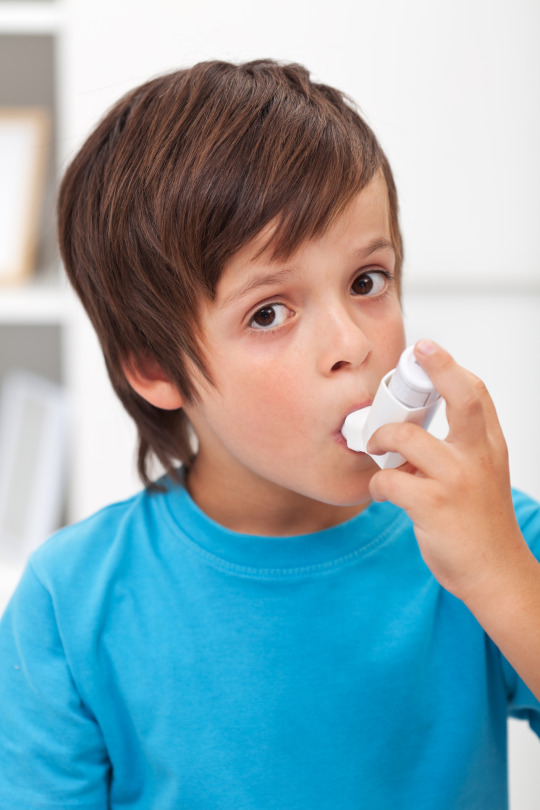
Mom of a baby/toddler: What is the best way to gauge how bad an attack is when your child is a baby/toddler and they can't tell you how they feel? I always have trouble knowing when I need to take my son to the hospital.
Dr. Drewek: Excellent question! Since smaller children can’t tell you how they feel, being vigilant towards physical signs is important. These signs include breathing fast, looking anxious, refusing to eat or drink, retractions (sucking in of the skin in between or around the bones of the chest when inhaling), frequent coughing attacks, and/or excessive sleepiness.
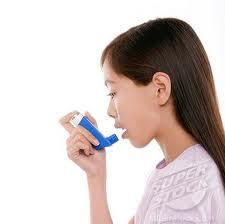
Young woman: I had asthma as a kid and needed to bring my inhaler with me everywhere. Anytime I had seasonal allergies, any sort of cold or sickness, or even ran too hard, I'd have trouble breathing. However, as I got older, my asthma seemed to slowly disappear and I haven't experienced an asthma attack in almost 7 years now. Is it normal to outgrow asthma, or is it caused by some other lifestyle change?
Dr. Drewek: A child’s asthma can get worse or better over time. Many children start to improve after their preschool years. Unfortunately, there is no way to predict which child will outgrow their asthma. Some studies have shown that children who have parents with asthma are more likely to have persistent symptoms. Asthma occurs due to a combination of genetic and environmental factors. Although a healthy lifestyle always helps with chronic medical conditions, it will not make asthma disappear.
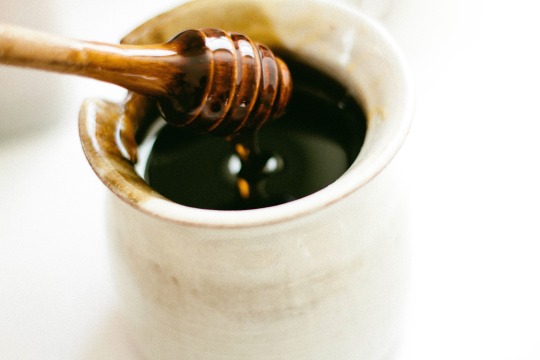
Image source: Sonja Langford
Curious mom: Does honey help to loosen up mucous and alleviate other asthma symptoms?
Dr. Drewek: There is definitely anecdotal evidence that honey is soothing, loosens up mucus, reduces inflammation, and helps kill bacteria. I have a holistic approach in my practice, and have definitely suggested using honey to some of my patients with a chronic cough (1 tablespoon 2-3X/day). However, it should only be used as an adjunct. In other words, it can be used along with, but should not replace the controller and rescue asthma medications.

Image source: Leonie Wise
Foodie mom: Do you recommend any changes to diet that can help prevent asthma or relief symptoms, that can be done in addition to regular medication?
Dr. Drewek: Eat plenty of fruits and vegetables! These contain antioxidants which may control lung swelling and irritation. There is a theory that Vitamin D reduces inflammation in the airways. Milk and eggs contain vitamin D. Even spending a few minutes outdoors in the sun can increase vitamin D levels. Being overweight can worsen asthma. Healthy food choices, and regular exercise in order to lose a little weight (if needed) can improve asthma symptoms. Mom tip: There are lots of smoothie recipes on Pinterest and other websites. They are tasty and mask the taste of vegetables that a child might not otherwise like. They have become an after school staple in our house!
Here are a couple recipes that I use all the time in our house: Kale, apple & banana smoothie & Banana-cocoa soy smoothie.
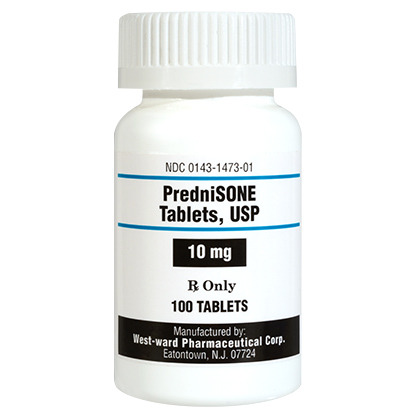
Worried mom: My daughter is on Prednisone. She is so hungry all the time and she has gained so much weight it is unhealthy. It is not her fault by no means. Poor kid! What I'm getting at is she had a very hard time taking Prednisone. She throws it up because the taste I think. Then has a belly ache for hours after. I make her take it with food; any ideas what I can do to help her? Also is there anything else they can give her other than Prednisone? I am just a worried mom who wants her to be ok. I wish I could take all this for her.
Dr. Drewek: Prednisone has many side effects, some of which you listed. It can cause moodiness, increased appetite, nausea, acne, and trouble sleeping. There is no replacement for Prednisone when it is used to treat an asthma exacerbation. Although Prednisone is sometimes necessary to treat asthma symptoms, it should not be used frequently. If your child is taking Prednisone on a frequent basis, you should seek medical attention, preferably with a pediatric pulmonologist. He or she can evaluate and see whether your child needs further testing or medications.
Mom of a newly diagnosed kid: My daughter, 6 years old, was recently diagnosed with acute asthma. We were referred to a pulmonologist following her chest x-Ray. She's extremely pneumonia prone, we've battled it at least 4 times this year. Having never dealt with asthma, I'm really unsure of steps to take other than her medicine regime to help keep her from getting so sick all the time. Any suggestions or website references are much appreciated!
Dr. Drewek: Having pneumonia 4 times in one year definitely warrants a referral to a specialist. I’m glad that you took your daughter to see a pulmonologist. Frequent pneumonia can be a sign of asthma, weak immune system, and some genetic problems. I would keep her on the medication regime that was prescribed. If this doesn’t work, your pulmonologist will likely order some more tests to see what the underlying problem is.
Thank you again for sharing your questions with us. Unfortunately, Dr. Drewek cannot answer all of your questions so we urge you to talk to your doctor, ideally a pediatric pulmonologist, to get the right advice for your kid. Please share your thoughts in the comments below or on our social media platforms. We love hearing from you.
Until next time,

Nikita
#asthma#asthma attack#asthma symptoms#asthmaawareness#kids health#Pediatrics#Pulmonology#healthy kids
0 notes
Text
Five Allergen-Free Treats for Valentine’s Day
Valentine’s Day is coming up soon! Looking for sweet things to whip up for someone special, while being conscious of allergens? No fear - take a look at some of our team’s favorites recipes!
1. Valentine’s Day Cookies

Source: Elana's Pantry

2. Chocolate Pancakes

Source: Allergy Awesomeness

3. Chocolate Chip Brownies

Source: Food Allergy Mama

4. Chocolate Snickerdoodle Cookies

Source: The Urban Poser

5. Valentine Cookie Bark

Source: Around my Family Table

We hope these recipes can help you enjoy Valentine’s Day; have a lovely weekend!
Cheers,

Isabella L
#valentine's day#recipes#allergenfree#glutenfree#glutenfreerecipes#dairyfree#eggfree#wheatfree#foodallergies#foodallergy#allergenfreerecipes#wizdy#wizdygames
1 note
·
View note
Text
5 Ways to Manage Asthma During the Winter
Winter can be a tough season for those with asthma. Here are a few useful steps you can take to tackle this season:
1. Breath through your nose

Source: Andrea Porfireanu
Breathing in cold air can cause your airway to tighten, which worsens asthma symptoms. Thankfully, noses act like an air filter; on top of warming up air as it passes through the nasal canal, it also humidifies it and filters out tiny particles such as dust or pollen. Breathing through your mouth makes cold air rush directly into your lungs instead. If you can’t avoid going outdoors, make sure you wear a scarf and wrap it around your mouth and nose — this will keep your face and neck warm.
2. Avoid smoke

Source: Tirza van Dijk
As cozy and warm as the fireplace can be, smoke is still an asthma trigger. Use electric fireplace logs if possible. And if you know someone who smokes, ask them politely to move downwind!
3. Be hygienic

Source: Dan Watson
Certain viruses tend to peak in winter months. Wash your hands often, especially right when you get back home, and stay away from others who are sick. If someone at home is sick, make sure you are wiping down tables, doorknobs, and other areas that are frequently touched. Germs enter the body easily through mucous membranes, so keep your hands away from your eyes, nose and mouth.
4. Get your flu shot

Source: Darko Stojaovic
If you have asthma, your airways are already swollen and tight. Getting sick with the flu can make things much worse, so make sure you get immunized! Talk to your doctor about the best options for you.
5. Educate yourself
youtube
Source: Wizdy Games
It’s always useful to know “why” as well as “what”. Teach your child how to use their inhaler and how to recognize common asthma triggers. One way you can do this is by looking through fun infographics together. Also, right here at Wizdy Pets, we’ve created our own educational game to teach kids about asthma!
We hope these tips can help you better manage asthma this winter!
Cheers,

Isabella Lo
0 notes
Text
Dr. Drewek shares her asthma “Must Knows” for parents and kids.

This week I had the delight of speaking with Rupali Drewek, MD. Dr. Drewek is a pediatric pulmonologist in Phoenix, AZ. She diagnoses and treats patients who suffer from respiratory or breathing problems such as asthma, allergic rhinitis, and cystic fibrosis.
Here’s an edited transcript of our interview.
youtube
Nikita: What do you recommend every parent learn and know about asthma?
Dr. Rupali Drewek: Parents should learn and understand the basic pathophysiology behind asthma in order to help treat their child. They should know that asthma includes inflammation as well as bronchospasm. They should know which medicines are for long-term control and which are for quick relief of sudden symptoms.They should also know how to use the inhaler correctly so they can assist their child.
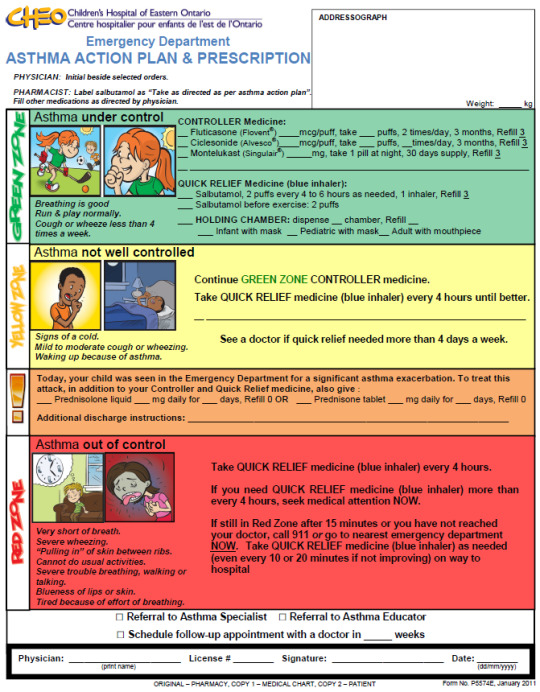
Nikita: What is an Asthma Action Plan? And how can it help families?
Dr. Drewek: An asthma action plan helps you keep your asthma under control. It says which medicine to take and how much of it to take. It tells you exactly what to do if you have a flare-up. It also says when someone needs to call the doctor or take you to the emergency department which is why it’s important families share this with school nurses and caregivers of their child.
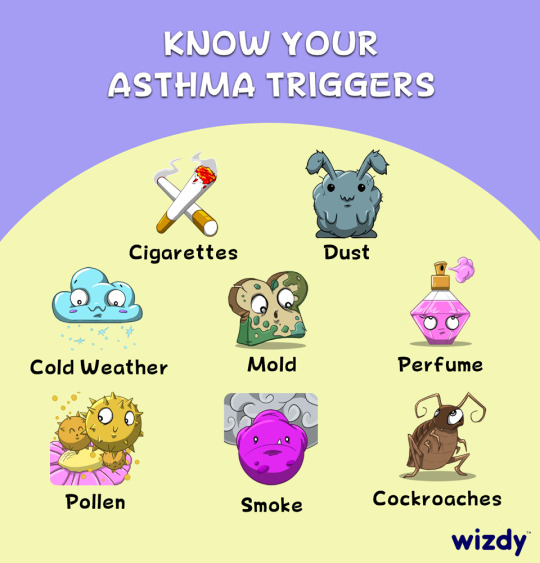
Nikita: How can parents help their children learn to manage their asthma?
Dr. Drewek: Parents can help remind their children to take their inhaled steroid or maintenance medication on a daily basis. In addition, they can help make the child aware of potential triggers which could cause asthma symptoms
Nikita: What do you think about Wizdy Pets?
Dr. Drewek: Wizdy Pets is an amazing app which educates children about asthma in a fun, and interactive way. The information provided is practical and useful. The games are enjoyable, engaging and entertaining. The animation is colorful and creative.
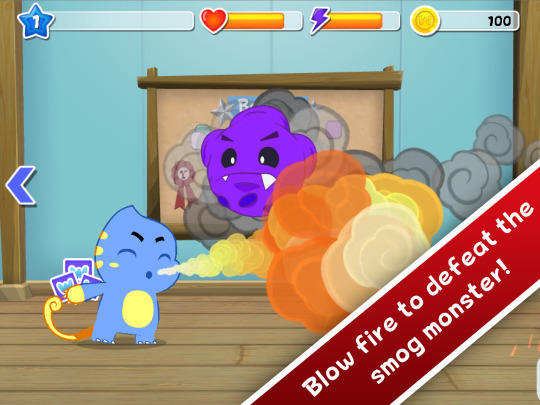
Nikita: What resources do you recommend to your patients?
Dr. Drewek: Currently, our nurses discuss asthma education with the family during clinic visits and each parent is given an asthma action plan. We do not have a lot of outside resources that we use. For that reason, I look forward to incorporating Wizdy Pets in my medical practice
1 note
·
View note
Text
Wellapets is now Wizdy!

Today is a big day for our entire Wellapets family.
Wellapets is now Wizdy!
We started making games with the core belief that virtual-pet games can be leveraged to empower kids to manage their health and stay well. When we started working on our next game, for food allergies, we saw an opportunity to expand from virtual-pet games and thus Wizdy was born. Wizdy enables us to create any kind of game, allowing us to focus on the most important thing - fun.
Our new name, Wizdy, was inspired by our mission - to impart life wisdom upon kids through games. We believe in gaming for good. Wizdy is a combination of wisdom and magic -with the right knowledge every kid can lead a life with unlimited potential.
Wizdy Pets - our asthma game - is now available on the Apple and Google app stores!
We collaborated with asthma specialists from Harvard Medical School and Boston Children’s Hospital to develop educational content for our game. Wizdy Pets teaches proper inhaler technique and timing, trigger and symptom recognition and the appropriate actions to prevent asthma attacks. Adopt your very own Wizdy Pet today on the AppStore & Google Play.
Game on!
Nikita

2 notes
·
View notes
Text
Thanksgiving Feasting with Food Allergies?

Thanksgiving dinner is a wonderful time to spend with your family and friends, but people often worry about their food allergies.
But it doesn’t have to be this way. With the right preparation, you can ensure a safe Thanksgiving dinner.
Here are some tips for a safe Thanksgiving away from home:
Know your allergens: Identify what you can eat and what you cannot eat.
Inform your host about your allergy: Tell them in advance about food you cannot eat.
Read the labels of all food ingredients: Read it before eating it.
Prepare yourself some allergen-free food: In case there isn’t anything you can eat, and there is never too much food for a Thanksgiving feast!
Be responsible: Allergies always stays away from people with allergen-free food and self-control.
Have a separate plate: Avoid mixing plates and cross-contaminating from others.
Wash hands before eating: It is a good habit for everyone regardless of food allergy.
Be prepared: Consider what could happen if you consume food that causes reaction.
Consult your doctor: Have your doctor list out the food that might cause reactions beforehand.
Bon Appétit: Use these steps and enjoy a stress-free feast with your loved ones!!
If you are hosting Thanksgiving this year, check out this “allergy free” menu which features a Thanksgiving feast free of the top 8 allergens HERE.
Written by
Vivian He
2 notes
·
View notes
Text
6 Tips to Survive September Peak Season
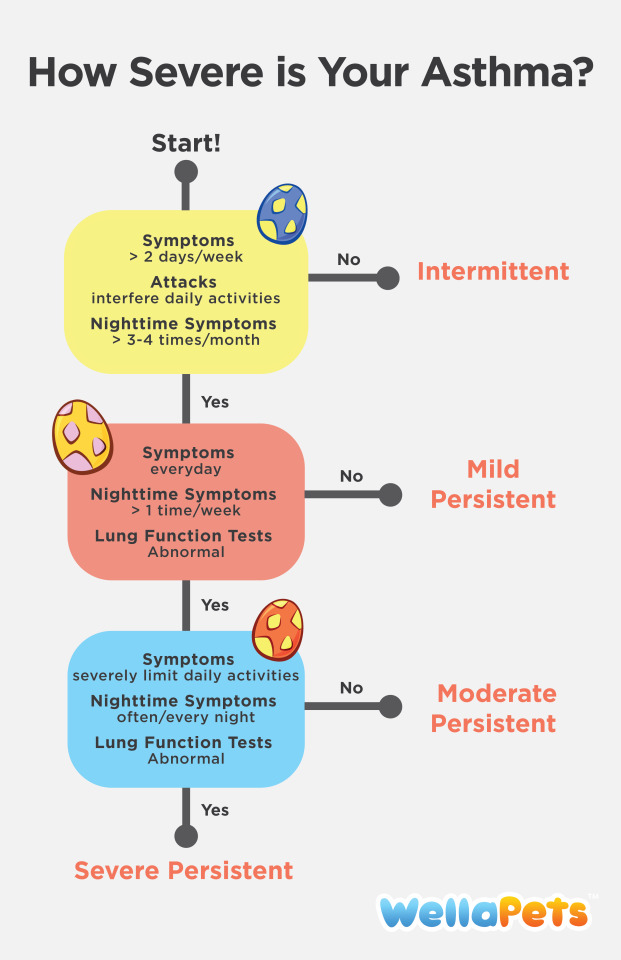
Nearly a quarter of all asthma-related hospitalizations for children occur in September. Experts believe that one of the main triggers for this has to do with increased exposure to viral infections such as cold and flu as well as increased pollens and mold counts. Today, I am speaking with Sabrina, who has had asthma since she was eight, to share her tips for controlling asthma, especially during this season. Sabrina’s asthma is induced by both exercise and allergy. According to the asthma classification chart above, her asthma is intermittent with her daily control medications but can quickly become severe-persistent when she forgets to take her medications. Here are her tips:
1. Put an emergency rescue inhaler in every bag During this “Back-to-School” season, anything floating in the air could pose a threat. By placing an emergency rescue inhaler in every single bag from her backpack, gym bag, purse, etc. Sabrina always has her medication on her and is prepared for any unexpected asthma attack.
2. Stay indoors, but stay active Even if you stay indoors, there’s still plenty of activities you can do like going to the gym, playing instruments, playing games. You name it, you can do it!
3. Exercise, exercise, exercise! Exercising makes your lungs stronger and healthier. Sabrina has been working out 3-4 times a week regularly for a long time, and whenever she works out she takes her emergency inhaler 15 minutes before and after.
4. Keep your home free of triggers Keeping your house neat and clean helps reduce allergens such as dust.
5. Be Cautious of cold medications! A recent research suggests higher intakes of acetaminophen and ibuprofen in early life may lead to an increased risk of asthma. Consult with your doctor before taking the over-the-counter cold medicines.
6. Love your body and enjoy life! In her high school, Sabrina completed 6 laps much faster than all the boys in her group who made fun of her for having asthma. She led a team of 10 people for an extremely challenging project with her excellent leadership and charisma. Believe in yourself and everything is possible.
This fall, Wellapets is coming to the U.S to educate and empower children with asthma. Stay tuned for our launch by following us Facebook, Twitter, Instagram and Pinterest!
0 notes
Text
When Life Gives You Lemons

My favorite meal to eat throughout a day, is indisputably brunch. It’s better than breakfast, because it’s later on in the morning, and it doesn’t require you to get up early. However it’s still early enough, in order to get activities done after you have eaten. I often find lunch to be too late arranged, and it postpones your appetite for dinner. Brunch is just in between - it’s perfect!
Last weekend I was going to have brunch with my vigourous friend Christina. As you might remember from one of my earlier blog post, she has asthma, but doesn’t let that affect her active life.
When I arrived, I saw a bunch of different ingredients on her workbench in the kitchen, but didn’t quite understand what we were going to do with all of them. It was ginger, cucumber, pineapple, maple syrup, cayenne peppers, turmeric and lemon. Christina smiled at my confused face: “Excited about what we are going to make?”. “Well, I’m more curious, I’ll have to admit that”. She told me that we were going to make a special home made juice, and it was supposed to be especially good for people with airways conditions - like asthma.
“First of all, I’ll go through the ingredients. Lemon juice can clear your airways and improve your immune system due to it’s high share of vitamin C - an antioxidant. It’s even better to combine this with ginger. Ginger is an anti-inflammatory that is supposed to help if your airways are getting constricted”.
“That seems reasonable, but what about turmeric and cayenne” I asked. “Haha, I know that those ingredients don’t seem natural to add in a juice, but the health benefits from those outweigh the taste. I promise! And that is why we’ll add a bit of natural maple syrup, to boost up the taste, and give it an extra kick”.
“I’m still not entirely convinced, but I’ll try to have an open mind. You recommend this special juice for asthmatics, you say? Christina emphasized that you should always consult your doctor, before trying new treatments. That goes for medicine as well as diets.
“You know, when life gives you lemons you ought to make some lemonade out of it. That’s how I see my asthma. And in this case, I’m making a kick-ass juice” she said to me, while starting cutting up the lemons. Cheesy proverb or not - perhaps she has a point?
Written by

Fredrik Døhl Mostad
1 note
·
View note
Text
The swimming pool - Friend or foe for asthmatics?

A short while ago I went with a couple of friends, Liza and Mathias, to Magazine Beach Outside Pool in Boston. The temperature was climbing towards 95 degrees and a refreshing dip in a swimming pool seemed to be the only reasonable thing to do. After a refreshing cool down and splashing around for a while, I noticed Liza’s hair had turned slightly green. We had a laugh about it, but we wanted to find out why it had happened.
A quick search on the web explained that the color doesn’t come from the chlorine itself, but it’s copper in hair colourings, reacting with the chlorine that causes the grassy hue. “So much for my appointment at my hairdresser yesterday” Liza sighed.
“Luckily, there is hope” I told her while I scrolled Google. “According to a news article by the New Zealand Herald, the chlorine can be neutralized by a vitamin C spray, or you could rub a tablespoon of tomato paste through your hair. The red pigment may help neutralize the green color”. She laughed ”I better give it a shot later on today”.
Mathias suddenly interrupted us: “Hey Liza, didn’t you use to swim a lot when you were younger? This article refers to a Belgian study from 2008, which states that children who swam once a week in chlorinated pools were five times more likely to be asthmatic than those who'd never swum in a pool”.
Liza shrugged “Well, it didn’t affect me. But now that you mention it, I do remember some of the other swimmers struggling with their breathing. However, that could easily be just a coincidence - other athletes struggle with respiratory diseases as well”.
“Yeah, I know, but I find what the doctor in the article said, quite interesting” Mathias replied, “It is thought that chlorine and it's by-products, when inhaled or swallowed, can attack the cellular barriers in the lungs that protect them from allergens. This is why some experts believe persistent exposure to chemicals in cleaning products such as chlorine may also be responsible for the increase in allergies in the past 50 years”
“That is definitely food for thought” I said, looking at all the people enjoying the soothing water in the afternoon sun. “The doctor states that more research is needed” Mathias continued, “However, I suggest to be on the safe side; keep your mouth closed while swimming” he smiled.

Written by
Fredrik Mostad
0 notes
Text
When your child’s health is restricted by the level of your income

A short while ago, I read a sad article about an elementary school student. For the sake of the story we’ll call her “Mary”. She struggled with severe asthma, and had to use her inhaler frequently. Her mother was concerned about their apartment’s condition, due to unresolved problems like pest infection and bedbugs. Like that wasn’t enough, the small family also faced eviction for non-payment rent.
Stories like this are unfortunately not rare in Worchester, Massachusetts, where 10 % of kids suffer from asthma. In addition to poor health, they also miss a lot of school days. Many of these children live in low-income neighbourhoods, where the substandard housing conditions exacerbate asthma triggers, such as mold, pests, and lack of heat.
It doesn’t help that these children on average move one or more times during a year, due to poverty-related instability. This causes them to fall even further behind in school. It requires both clinical care and stable housing conditions to help them control their asthma. Yet in most communities, these two factors are usually seen as separate problems.
The city of Worchester is, however, an exception; The City’s Division of Public Health use a multi-sector approach to address housing and health need for children at high-risk for asthma.
What they did
The Massachusetts Medical Society funded a small pilot program at UMass Memorial in which attorneys trained community health workers to screen families for housing-related civil legal problems; they provided asthma management education and a healthy home assessment, addressing both medication management and housing conditions simultaneously.
The pilot served 30 children and gave community health workers and civil legal aid partners an opportunity to build strong relationships and hone service delivery, from referral mechanisms to case feedback loops.
Mary was among the first asthma patients enrolled in Worcester’s new asthma program. Her community health worker connected Mary’s mom with Community Legal Aid. An attorney interviewed Mary’s mother to identify her healthy housing goals and represented her in court. As a result of the legal intervention, the eviction was dismissed, her subsidized housing voucher was protected, and the poor conditions were addressed. Through a combination of asthma education, medicine, and better housing, the team stabilized Mary’s asthma.
I think it’s absolutely crucial to have services like this to help people in vulnerable positions, like Mary and her mom. I salute the effort done by the Public Health on Worchester, and hope more cities will follow.
Source: Health Affairs Blog

Written by
Fredrik Døhl Mostad
0 notes
Text
Fierce Firework

Three weeks ago I celebrated Independence Day with my friends in Boston. We went down to the Esplanade, located in Charles River. However, we weren’t the only ones eager to watch the spectacular fireworks; thousands of thousands of people had positioned themselves along the river with camping chairs, tents and blankets. The launch of the fireworks was to be set off at 1030 PM, from a barge in the middle of the river.
We maneuvered ourselves between the masses of people, found an available spot of grass, and waited patiently for the show to begin.
Suddenly a familiar sound exploded over our heads; the firework show had begun. The sky danced with colors of red, white and blue. And when “USA” was written in the sky, the crowds of people cheered with joy. It was truly an amazing sight, and worth all the waiting.
However, I observed that the fireworks caused A LOT of smoke, and I began wondering what effects this might have for the environment, and for people struggling with respiratory diseases. I recently read a study featured in the journal Atmospheric Environment, which claims that fireworks from the celebration of 4th of July directly cause a 42 percent rise in air pollution (compared to the days before and after), and far exceed the tolerable level of pollution for healthy breathing.
There is especially a fine particulate matter, called “PM2.5” which concerns the U.S Environmental Protection Agency (EPA). These particles are released during the launch of fireworks, and are so microscopic that they can get deep into the lungs and cause serious health problems, for instance asthma attacks.
I don’t want to put a damper on the celebration, but I think it’s important to be aware of the effect those brief moments of exploding joy may cause people with respiratory problems. If you are interested in reading about the study, check out Medical News Today.
I hope everyone had a wonderful weekend :)

Written by Fredrik Mostad
0 notes
Text
Defeating the smoke monster

In many places around the world, air pollution causes suffering for millions of people. Unfortunately air pollution has an infamous friend known as climate change. The third part of their gang, smog, is also no good for us. Smog shows up when gases from fossil fuels pollute the air. Together they constitute a dangerous trio, and we designate them as the smoke monster.
The rising temperatures worsen air pollution by increasing ground level ozone; a chemical reaction between sunlight & emissions and the main component of smog. This creates dirty air – a combination of ozone and fine particles – which is very bad for us, especially for our little ones, whose lungs aren’t fully developed yet, as well as for the elderly and people with asthma.
Why do I bring this up? Well, I want us to defeat this smoke monster. If the air gets cleaner, lung health will presumptively improve, and that will benefit us all.
The other path is quite gloomy; if the air quality gets worse over time, we have sound scientific evidence that there will be increases in chronic respiratory conditions for kids, including asthma, bronchitis, reduced lung development – in all children, not just those with existing respiratory conditions. Kids with asthma would be hit particularly hard. If our air quality gets worse, children’s health will suffer.
How can we reach this goal? The Lancet commission on Health and Climate, an international collaborative environmental organization, calls for a rapid phaseout of coal from the global energy mix. The commission is, for instance, urging that society replace the 1200 coal fired plant currently proposed for construction globally, with healthier, cleaner energy. This will protect respiratory and cardiovascular health for all of us.
It’s time we think of the environment and how we’ll leave the world behind for our children. I hope we can band together to defeat this smoke monster and create a healthier, cleaner world.

Written by Fredrik Mostad
0 notes
Text
Control your diet to fight asthma

Last week I had lunch with my friend, Caroline. She had just announced her pregnancy, and was surely excited about this. We met at her apartment, where she had prepared a variety of foods.
I immediately noticed that she had bought A LOT of different fruits, grains and beans; no egg and bacon were present.. She said she had become aware of her diet after her pregnancy, and she wanted to be serious about it. So my question was: what had she found out?
She admitted that there are many contradictory recommendations, and she didn’t necessary have the gold standard. However, she trusted in her findings: “The diet is about finding foods with a high proportion of fiber. The thought is that this will reduce the risk of obesity, heart disease, diabetes – and asthma”. I was taken aback by the latter one: “Preventing asthma? Could that really be true?”
Caroline explained:” According to a study from Nature Communications, moms who eat fiber-rich diets are less likely to have kids with asthma. The researchers have been testing their hypothesis on mice, and concluded that high- fiber-diet could suppress allergic airways disease (AAD), which is similar to the asthma condition in humans. The adult offspring of the mice that fed on the diet didn’t develop robust AAD, and that similar correlations exist in humans.”
I was intrigued by the study, but reminded her that correlation is one thing and causality something else: There is possible that other parameters could give those results. However, the diet doesn’t seem to cause any negative effects. “I think it’s worth trying, as long as I believe in it” she smiled.

Written by Fredrik Mostad
#Asthma#AsthmaAwareness#WellwithWella#Fiber#Fiberdiet#pregnancy#kidshealth#mothers#parenting#food#wellness#staywell#healthy
0 notes
Text
No limits

My alarm clock was buzzing; 6.00 AM. The rain was pouring down outside, and all my head wanted was to go back to dreamland. However, that wasn’t an option today. I had agreed to meet up with my friend, Christina, to run intervals at Nickerson Field, Boston University’s athletic center.
I saw Christina already warming up; she seemed unaffected by the fact that it was practically a deluge this morning. She waved at me and shouted, “10 minutes until start!” I shook my head, and thought to myself, that THIS was going to be tough.
Before we started our weekly workout of 1 mile x 10 repetitions, I noticed that Christina used her inhaler. I was used to seeing this, but I had always wondered how the asthma affected her while running.
We finished our workout; and while catching our breath I asked her about the asthma.
“As long as I remember to take my medication, running is not a big issue. I actually read a new research study which convey that cardio workouts, which get your heart pumping, may actually ease asthma.”
I replied a bit skeptical, “But is it clear that the benefits of exercise outweigh potential harms?”
Christina smiled and shrugged: “Well, at least I feel it benefits my overall physical condition. In the study they tested the participants’ “bronchial hyperresponsiveness”, which basically means the speed at which the airway constricts asthmatics. And they found improvements in people who engaged in aerobic exercise versus those who didn’t. However, the results suggested that exercise shouldn’t replace medication, but rather work as an adjunct therapy”.
We both agreed that the findings were important. I hope this helps those who fear that exercise will trigger their asthma to flare-up. And of course, talk to your doctor before taking part in any high-intensity workout. For more information about the study, click here.

Run on,
Fredrik
#Asthma#asthma attack#Asthma awareness#wellwithwella#staywell#hiking#edtech#mobilegames#kidshealth#adoptawellapet#australia#New zealand
0 notes
Text
Hiking with Asthma: Don’t Pack an Attack

Last weekend I went hiking with a group of friends to White Mountains in the beautiful state of New Hampshire. In this national forest, the famous Mt. Washington is located. At a height of 6288 feet, it maintains its position as the highest peak in the Northeast. The summit also holds the record for the fastest surface wind gusts at 231 miles per hour.
Thankfully, the wind was much kinder to us this weekend. One of the girls in my hiking party, Mikayla, has asthma. I was wondering how she dealt with her condition during activities like hiking: Could she participate to the same extent as the rest of us? I asked her if she could share her tips for asthmatics.
These are her hiking tips:
1. Be aware of your triggers.This sounds like an obvious tip, but do you really know what triggers your asthma? Food-allergies are an often-missed trigger, since symptoms can occur hours after ingestion.
2. Take it easy. Remember that nobody loses in hiking. Keep your own pace and avoid overexertion; take a break when necessary.
3. Check the weather forecast. Hiking in cold, rainy weather is unpleasant for everybody. However, it’s often worse for those with asthma – especially if the air is damp and moldy.
4. Be aware of your breathing. Breathing through your nose is preferable, as it filters allergens from the air, warms the air before hitting the lungs, and limits the loss of CO2, that may be an underlying cause of asthma.
5. Be prepared with your medication. Stop hiking, remove pack. Sit or stand; maintain a good posture. Try to relax. Take medication if that is required. Notify your traveling companions, and don’t resume hiking before the breathing is under control.
6. Bring extra supplies. That includes an extra inhaler or at least an extra canister. Always use clean, filtered water to rinse out dirt and residue. Remember to keep the inhaler warm in very cold weather to work properly.
Comment below with your hiking tips!

Written by Fredrik Mostad
#asthma#asthma attack#asthma awareness#WellwithWella#staywell#hiking#edtech#mobilegames#kidshealth#AdoptAWellapets#Australia#New Zealand
0 notes
Text
Do you think your pet has asthma?

A couple of weeks ago I was visiting my friend Magnus back home in Norway. I pressed the doorbell and waited to be let in, when suddenly his cat, Nymeria, appeared behind me. She was meowing softly, and looking imploringly at me. I was about to kneel beside her and pat her fluffy fur, when she suddenly began coughing.
My immediate thought was that she probably just passing a hairball. Once Magnus opened the door, he saw the poor cat struggling with her breathing and he quickly went back inside to get an inhaler. He helped Nymeria breath into the device, and asked me: “Have you ever seen a cat having an asthma attack before?” I shook my head and told him that I didn’t even know that cats could suffer from the condition. Eventually Nymeria calmed down, and we went inside with her.
As it is for humans, there is no known cure for asthma in pets. However, for pets that are living with asthma, identifying the signs and symptoms of the condition is the first step toward a happier and healthier life.
In our game you will learn to identify when your Wellapet is struggling with asthmatic symptoms. Those symptoms also count for pets, like dogs and cats. Here’s a brief overview of signs that your beloved pet may be suffering from asthma:
-Coughing and wheezing (this is often the most obvious and persistent symptom of feline asthma).
-Open mouth breathing, which may occur during times of rest, heightened stress, or increased activity.
-Blue lips and gums during the aforementioned times of labored breathing.
For more information about recognizing and treating asthma in your pets, click here.

Written by Fredrik Mostad
#AdoptAWellapet#WellwithWella#AsthmaAwareness#PetAsthma#FelineAsthma#Dogs#Cats#Health#Asthma#EdTech#WellaBlog#AsthmaTips#Allergies
0 notes